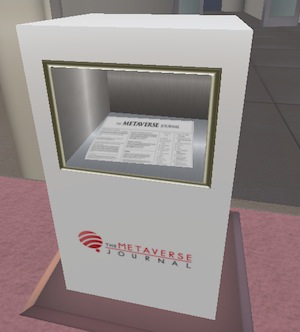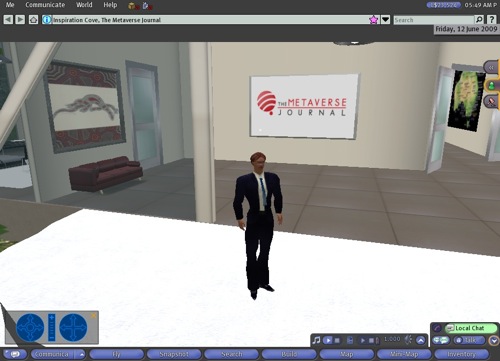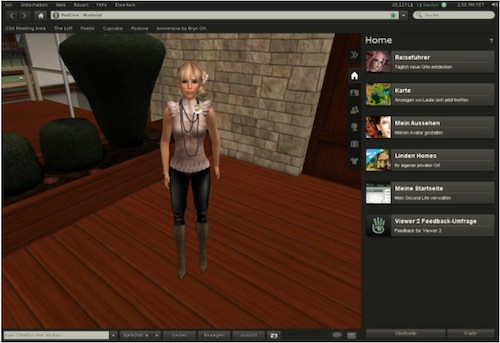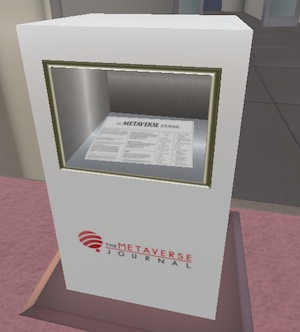 1. CNET (USA) – Where virtual worlds once ruled, FarmVille dominates. “Almost every week for the last few years, it seems, I’ve gotten a press release or a pitch touting some company’s great new Facebook games network or kids’ virtual world.
1. CNET (USA) – Where virtual worlds once ruled, FarmVille dominates. “Almost every week for the last few years, it seems, I’ve gotten a press release or a pitch touting some company’s great new Facebook games network or kids’ virtual world.
And why not? Companies like Zynga and Playfish are making money hand over fist with their collections of massively popular social games, and 2D Flash games aimed at children like Club Penguin, Webkinz, Habbo Hotel, and others have garnered vast amounts of virtual world investment dollars in recent years.
But to someone who cut his virtual world teeth on more immersive, 3D environments like There and Second Life, these never-ending announcements of new companies trying to jump on the social gaming bandwagon have left me with one nagging question: Where is the innovation?”
2. Computerworld (USA) – Second Life seeks mainstream adoption. “Linden Lab, which develops and operates Second Life introduced a new beta version of its desktop viewer software on Tuesday, the first big upgrade in many years. Will the new software help bring about a renaissance of the once-trendy service? You remember Second Life. It’s a virtual world, a three-dimensional environment like World of Warcraft or Grand Theft Auto. But it’s not a game, it’s a simulation of a world. You can build virtual buildings and vehicles, create virtual clothes, play live music, role-play as a vampire or cowboy, and buy and sell virtual goods for real-world money. It’s the closest thing we have now to Star Trek’s holodeck.”
3. CLickZ (USA) – WildTangent Targets Social Media Games and Virtual Worlds. “Game-based advertising company WildTangent announced the launch of BrandBoost, a platform that enables brand marketers to tap into the audience for virtual worlds, social media games, and massively multiplayer online games. The Redmond, WA-based company said BrandBoost is already being deployed on several properties, including OutSpark.com, OMGPOP.com and Sony Online Entertainment’s FreeRealms, which already has attracted 8 million registered users since its formal launch last year.”
4. Hypergrid Business (Hong Kong) – Virtual worlds pose compliance risks. “The very aspects of virtual world that make them appealing to some enterprise users, such as the collaboration tools, also make them risky from a compliance perspective. These risks include the communication risks of the wrong information getting to the wrong people, inappropriate workplace behavior, and lack of archiving tools.”
5. Los Angeles Times (USA) – Disney hopes kids will take online World of Cars out for a spin. “Walt Disney Co. believes that World of Cars, its new subscription-based online community aimed at boys and based on the Pixar movie “Cars,” won’t get lost in the traffic of virtual worlds. Things are already a bit congested. Some 200 virtual worlds target children under 12. Each competes for a slice of the 10 hours and 45 minutes a day the Kaiser Family Foundation estimates that kids spend viewing media, simultaneously vying for screen time against a growing number of portable media players and smart phones that offer their own diversions.”
6. Escapist Magazine (USA) – Are Advertisers Running Away From Home? “The failure of PlayStation Home to capture gamers’ attention may be having repercussions as advertisers jump ship to the more media-friendly Xbox Live. When PlayStation Home made its open beta debut at the tail end of 2008, gamers responded with a collective shrug of disinterest. The world had barely any of the content originally promised, felt empty and lifeless, and offered little incentive to log in more than once. Home’s failure to connect with users may be the reason for Sony’s absence from this year’s Engage Expo, believe brand analysts at Brand Week, when the hardware giant had been promoting the service as the next big thing at the Expo just a year before.”
7. Stanford Report (USA) – Can avatars change the way we think and act? “If you saw a digital image of yourself running on a virtual treadmill, would you feel like going to the gym? Probably so, according to a Stanford study showing that personalized avatars can motivate people to exercise and eat right. Moreover, you are more likely to imitate the behavior of an avatar in real life if it looks like you, said Jesse Fox, a doctoral candidate in the Communication Department and a researcher at the Stanford Virtual Human Interaction Lab. In her study, she used digital photographs of participants to create personalized avatar bodies, a service some game companies offer today.”
8. FierceContentManagement (USA) – What if content management were 3D? “I recently saw the Michael Douglas/Demi Moore 1994 movie called “Disclosure.” In the movie (which explores sexual harassment in the workplace), Michael Douglas was working for a computer company that created a 3D virtual reality database. The user would put on special glasses and he was literally inside the database with the data. He could walk inside a library of content, interact with it and touch it.”
9. Sydney Morning Herald (Australia) – No R-rating for games does not compute. “It’s confession time. I have picked up a prostitute in a stolen vehicle and sped the wrong way down a busy highway to escape police. I have accompanied a terrorist group in an airport shooting spree. I have garrotted guards, slaughtered soldiers, decapitated dudes and shotgunned sheilas. But never have I felt the remotest desire to do any of this for real. They were computer games. Yes, I’m a ”gamer”. At 37, I’m a little older than average for a gamer, but not by much. Gen X was the first gaming generation. I can’t remember there not being computer games. I first discovered there wasn’t a Father Christmas when I found a (very primitive) computer game under my parents’ bed, and got it as a present a few days later.”
10. USA Today (USA) – Author: Librarian, cybrarian appreciation is ‘Overdue’. “Bryan Hissong is 31, happily married, and the father of a 2-year-old named Olivia. He seems quite content with his life.
But Marilyn Johnson, who is not his wife, loves him and has said so very publicly. It doesn’t matter that she has never met him. Hissong is a librarian. He doesn’t look like the clichéd librarian of old. He favors plaid shirts and is sporting a beard on his babyface — but that doesn’t matter to Johnson, either. She’s well aware that librarians wear many disguises these days. Often they’re pierced, tattooed, punk with bright blue hair. She loves them all.”








Recent Comments